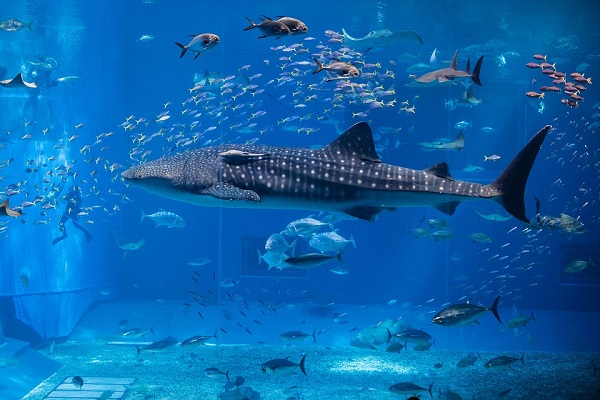(Samajweekly) South West Tenerife has become Europe’s first Whale Heritage Site, a global certification developed by the World Cetacean Alliance and supported by World Animal Protection, that recognises outstanding destinations for responsible and sustainable whale and dolphin watching.
The site at Tenerife-La Gomera Marine area offers tourists an easy way to select responsible whale and dolphin watching in the wild and gives the travel industry a way to move away from selling wildlife entertainment activities and select ethical practices instead.
Tenerife is popular with UK tourists and a famous spot to see whales and dolphins in the wild. The accreditation of the site in South West Tenerife recognises the community´s commitment to respect and celebrate these animals. Twenty-eight cetacean species can be found in the island’s waters including short-finned pilot whales, sperm whales and bottlenose dolphins.
This site and one in Dana Point, California, USA also announced today, join the only other two Whale Heritage Sites in the world: The Bluff, South Africa and Hervey Bay, Australia.
“Whale Heritage Sites play a vital role in showing a responsible and sustainable alternative to wildlife entertainment activities” said Katheryn Wise, Wildlife Campaign Manager at World Animal Protection. “While travel is temporarily on hold for most of us, when it does resume it is up to all of us to make responsible choices. These sites will help promote tour operators who protect the welfare of marine wildlife while offering tourists the chance to experience these animals free and thriving in the wild, where they belong.”
Elizabeth Cuevas, Whale Heritage Sites Manager at World Cetacean Alliance, said:“The designation of Europe’s first Whale Heritage site is a wonderful step forward for responsible tourism. We believe the site is fast becoming a world leader in sustainable whale and dolphin watching and this certification will help the local community by recognizing responsible whale watching practices supported by the latest research and conservation efforts.”
Becoming a Whale Heritage Site will ensure that visitors are contributing to destinations that celebrate their natural heritage, protect marine wildlife and build a connection between local residents and sea life. In addition to the opportunity to observe cetaceans, vibrant festivals and other events celebrate the marine environment and provide education and inspiration for tourists and locals alike.
Tenerife-La Gomera Marine area´s location in tourist hot-spot Tenerife is popular with the island’s 6 million annual visitors1. The importance of the tourist industry to the local area is reflected in the local and national regulatory frameworks, which provide formal protection of the marine ecosystem, with two Special Areas of Conservation (SACs) and a strong legislative framework protecting cetaceans.
To qualify for Whale Heritage Site accreditation, candidate destinations must meet set criteria which recognises their commitment to cetacean conservation through responsible wildlife interactions and sustainability. These include:
- Encouraging respectful human-cetacean coexistence
- Celebrating cetaceans
- Environmental, social and economic sustainability
- Research, education and awareness
In meeting Whale Heritage Site criteria, sites must take into account information relating to the relevant local cetacean populations including their status, numbers, biology, habitat, behaviour and welfare.
For more information about Whale Heritage Sites visit WhaleHeritageSites.org
Ends
Notes to editors
- B roll of the Whale Heritage Site at Tenerife-La Gomera Marine area here
- Images of the Whale Heritage Site at Tenerife-La Gomera Marine area here
Tenerife-La Gomera Marine area
Tenerife-La Gomera Marine area, has a unique resident population of pilot whales living alongside a high diversity of other cetaceans (whales, dolphins or porpoises). They inhabit a designated Special Area of Conservation (SAC), with a coastline that hosts millions of tourists every year – many of whom wish to see these majestic marine mammals in the wild. There are 28 cetacean species to be found in the island’s waters – most migrant or seasonal – but some resident, including short-finned pilot whales, sperm whales and bottlenose dolphins, ensuring a year-round whale and dolphin-watching season.
Dana Point
With a variety of year-round whales and more dolphins per square mile than anywhere in the world, pristine coastline, calm seas, the first and longest running annual Festival of Whales, and a captivating harbour minutes from the open ocean, Dana Point, California, is the Dolphin and Whale Watching Capital of the World®. Dana Point is one of the best places in the world to view the largest animal to have ever lived on earth: the magnificent blue whale, and also, a plethora of rare whales and dolphins including killer whales, pilot whales, sperm whales, false killer whales, Dall’s porpoise and more.
About World Animal Protection
World Animal Protection seeks to create a world where animal welfare matters, and animal cruelty has ended. Active in more than 50 countries, we work directly with animals and with the people and organisations that can ensure animals are treated with respect and compassion. We hold consultative status at the Council of Europe and collaborate with national governments and the United Nations.
About World Cetacean Alliance and World Animal Protection
World Cetacean Alliance (WCA) and World Animal Protection collaborate to create a world where whales and other cetaceans are only found in the wild, where they live in harmony with people and are experienced respectfully by a responsible and protective tourism industry.
Both organisations are working together to implement activities that aim to end captivity and develop responsible alternatives. By doing so, they are clearing the way for a responsible whale watching industry that protects and facilitates experiencing cetaceans respectfully, in their natural habitat.
A great step towards achieving this vision is the new edition of the animal welfare guidelines of the Dutch travel trade association, ANVR. Entertainment with dolphins and cetaceans that offer direct interaction are now deemed ‘unacceptable’ by ANVR and member tour operators are advised not to offer or support these activities any longer.










